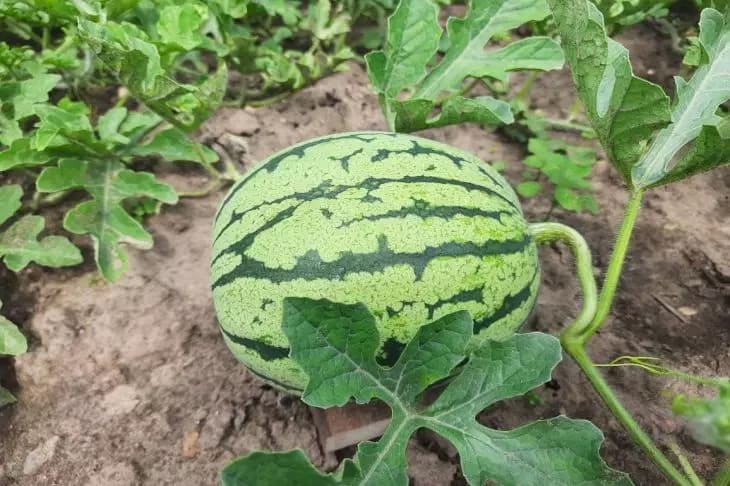Every summer, watermelons become one of the most desired and anticipated fruits in the world. Their juicy and sweet pulp perfectly quenches thirst and lifts the mood in hot weather.
If you also want to grow tasty and juicy watermelons in your garden, this guide will help you with this.
Gardening experts share their tips on choosing quality seeds and caring for plants properly.
Selecting quality seeds
The first step in growing watermelons is choosing the right seeds. Pay attention to the quality of the seeds you buy. Buy them from reputable suppliers or from specialized gardening stores.
Choose seeds from regions that match the climate and soil conditions of your area. Pay attention to the packaging date, as fresh seeds have a higher chance of germinating.

Also, do not forget that each variety of watermelon requires its own seeds. Before buying seeds, study the information about the varieties and their characteristics.
For example, the Crimson Sweet variety grows well in temperate climates and has a high yield, while the Sugar Baby variety is suitable for growing in warm regions and has a compact size, which makes harvesting easier.
Soil preparation and planting time
After selecting the seeds, you need to prepare the soil for planting. Watermelons love sunny places and fertile soil. Choose a place that receives most of the daylight and does not have stagnant water.
Before planting, it is necessary to work the soil well, adding compost or humus to enrich it with nutrients. After processing the soil, prepare a hole about 30x30 cm in size and 15 cm deep.
The best time to plant watermelons is late spring or early summer. Plant the seeds when the soil temperature reaches about 18 degrees Celsius. This usually happens in May or June, but it may depend on the location and climate.
Proper care of plants
After planting, it is necessary to provide proper care for the plants to get a rich harvest. Here are some tips for caring for watermelons.
Watering
Watermelons need regular watering, especially during hot weather. Water the plants deeply so that the water reaches the roots.
However, do not over-water the soil, as this can lead to root rot and deterioration of the fruit quality. Moderate watering is sufficient for watermelons.
Loosening the soil
Once the first leaves of watermelons appear, loosen the soil around the plants to improve air access to the roots and provide better nutrition. This can also help prevent the growth of weeds, which can compete with the plants for nutrients.
Trimming
Prune shoots that grow more than 60 cm from the main stem. This will help improve nutrient concentration and plant vigor.
Fertilizer
To improve the harvest, you can add fertilizers to the soil containing nitrogen, phosphorus and potassium. However, do not overdo it with fertilizers, this can lead to unwanted growth of foliage, but not fruits.
Pest control
Watermelons can become prey to various pests such as aphids, mites and ants. To prevent them, you can use natural insecticides or herbal infusions such as garlic, pepper and mint.
Harvesting
Watermelons are ready to pick when the fruit is ripe and sounds hollow when tapped. Also, the stems and leaves become more yellow and dry. Pick the fruit with sharp knives, leaving some of the stem on. This will help the watermelons last longer.
Storage and use
Watermelons should be stored in a cool, dry place, such as a basement or refrigerator. They can last for up to several weeks, but it is best to eat them as soon as possible after picking to preserve flavor and nutrition.
Watermelons can be consumed in a variety of dishes and drinks, such as salads, desserts, juices, and smoothies. They contain many vitamins, minerals, and antioxidants that can improve health and reduce the risk of various diseases.
Conclusions
Growing watermelons can be a fun and profitable endeavor if you choose the right seeds and provide proper care for the plants.
Choose quality seeds from reliable suppliers, prepare the soil and provide the plants with the necessary care. Do not forget about proper watering, soil loosening, pruning, fertilizing and pest control.
If you do everything correctly, you will get a rich harvest of juicy watermelons that can be used in various dishes and drinks.








